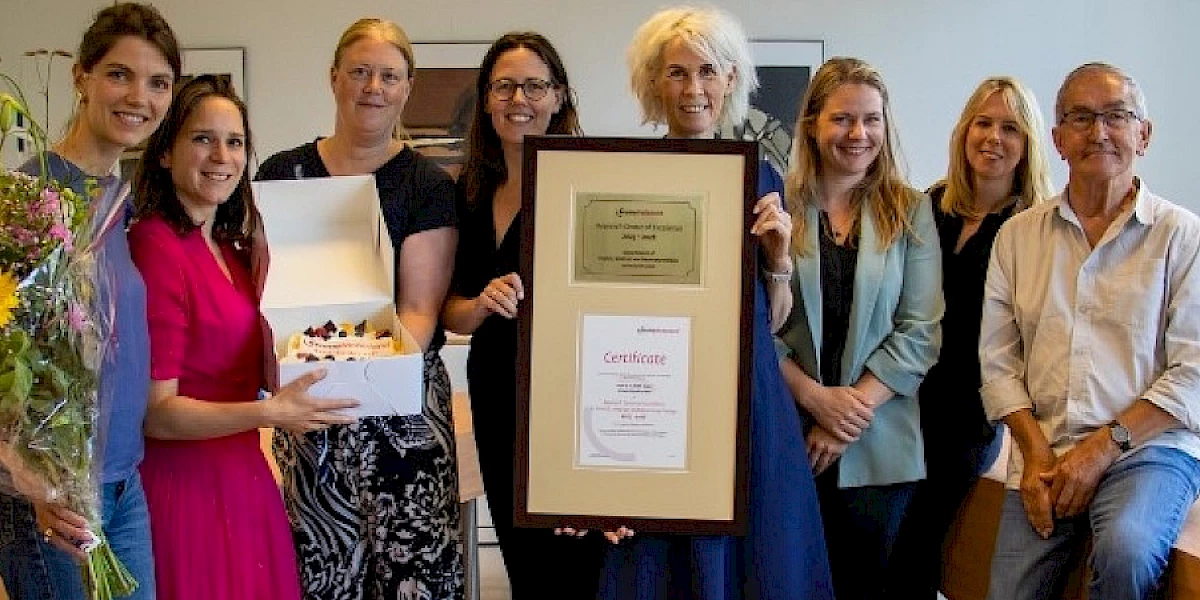Can placebo techniques help rheumatism patients reduce their medication?
Over two million Dutch people suffer from a form of rheumatism such as osteoarthritis, chronic inflammatory rheumatism or gout. Many of them take long-term medication such as anti-inflammatories and painkillers. Unfortunately, these medicines can also have unwelcome side-effects such as liver disorders and an inhibited immune system. A team of Leiden psychologists are therefore going to study whether advanced placebo techniques help to optimise the effects of treatment so that patients need less medication. ‘We will be conducting this study among a group of patients who are in a stable stage of their illness and who would like to reduce their medication,’ commented health psychologist Andrea Evers, who is heading the research programme.
Thanks to all the donors
Representatives of the Netherlands Arthritis Foundation visited the Leiden research team at the Faculty of Social and Behavioural Sciences. Evers thanked the Foundation and all the donors warmly for this subsidy of half a million euros: ‘It is exceptional and highly important that the Netherlands Arthritis Foundation also supports interdisciplinary and social scientific research that can benefit patients.

How placebos work
During the meeting, psychologists Judy Veldhuijzen, Henriët van Middendorp, Stephanie Meeuwis and Liesbeth van Vliet explained their expertise. The team will study the role of the expectations of both doctors and patients regarding treatments and how brain mechanisms influence physiological processes. This spring they and other Leiden researchers set up the Center for Interdisciplinary Placebo Studies, which offers such facilities as training courses for care professionals. It is not only important what a doctor says, but also how they communicate with a patient, according to Van Vliet. Positive expectations about a treatment can reinforce the favourable effects of a treatment: this is the placebo effect. Routine treatments can be more effective if a patient experiences less anxiety and chronic stress.
The counterpart is the nocebo effect: when people expect to suffer considerable pain, there is increased activity in the brain areas that process pain signals based on earlier experiences and expectations. As a result, people can actually experience greater pain. As a result of repeated experiences – known as conditioning – expectations can thus have a direct effect on bodily processes.
Training rheumatologists and patients
In the new, five-year programme, the team will examine whether it is possible to reduce rheumatism patients’ use of particular medicines (TNF inhibitors) by applying advanced placebo techniques. Care providers will be given a communication training about reducing medicines. Patients will receive careful guidance on reducing their medication and an expectation training where they will learn how to handle their concerns about their condition.
Pharmacological conditioning
The team will also study the use of pharmacological conditioning. Their aim is to learn how the body can be stimulated to produce a comparable physiological and physical response with a lower dose of medication in conjunction with placebo medication. Positive results have already been identified from Leiden and international research, for example in patients with Parkinson’s, says Evers.
'Conditioning should not be seen as something that is only between the ears; it is a fundamental biological process.’
The patient perspective
Experiential expert and psychologist Toon van Helmond is one of the representatives of the Netherlands Arthritis Foundation. He has suffered from rheumatism for thirty years and is part of a committee of experiential experts who assess research proposals together with a team of rheumatologists and researchers. ‘The patient perspective has gained in importance in recent years,’ he explains. ‘Doctors are by no means always aware of the significance of the placebo effect, so this is a very valuable study. Careful communication is essential. Conditioning should not be seen as something that is only between the ears; it is a fundamental biological process.’
Work to be done
Evers is in full agreement: ‘There’s still a lot of work to be done to explain the placebo effect properly, so we are giving numerous lectures in hospitals. This programme offers new treatment options complementary to regular care, and will provide insights into who this treatment strategy works best for.’
Photography: Anne Holleman
Text: Linda van Putten

